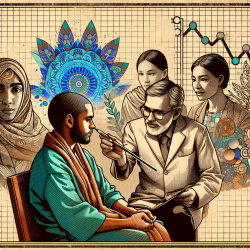Unlocking the Power of Visual Expression in Therapy
In the world of speech-language pathology and therapy, we constantly seek innovative methods to enhance our understanding of clients' experiences. A groundbreaking study titled ‘I drew the parts of my body in proportion to how much PCOS ruined them’: Experiences of polycystic ovary syndrome through drawings provides a compelling case for the use of drawings as a therapeutic tool. This research delves into the experiences of individuals with Polycystic Ovary Syndrome (PCOS) through the medium of drawings, revealing profound insights into their emotional and physical experiences.
Understanding PCOS Through Visual Narratives
PCOS is a chronic endocrine disorder that affects up to 10% of individuals with ovaries, manifesting in symptoms such as hirsutism, weight gain, and infertility. The study involved 89 participants who used drawings to express their personal experiences with PCOS. These drawings unveiled four main themes: awareness of visible and invisible symptoms, misshapen self and body, limitations and barriers, and resignation. Each theme was metaphorically linked to PCOS as a controller, adversary, wall, and weight, respectively.
Implications for Practitioners
For practitioners, the study underscores the potential of drawings to offer a deeper understanding of clients' internal worlds. Here are some ways you can incorporate these findings into your practice:
- Enhance Client Communication: Encourage clients to express their feelings and experiences through drawings. This can provide a non-verbal outlet for emotions that may be difficult to articulate.
- Identify Underlying Issues: Use drawings to uncover hidden concerns or emotions that may not surface during traditional verbal communication.
- Personalize Therapy Approaches: Tailor interventions based on the unique insights gained from clients' drawings, addressing both visible and invisible challenges they face.
Encouraging Further Research
While this study provides valuable insights, it also opens the door for further research. Exploring the use of drawings in other chronic conditions or in different cultural contexts could expand our understanding of their therapeutic potential. Additionally, integrating real-time drawing tasks with interviews may yield even richer data.
Conclusion
Incorporating visual methods like drawing into therapy sessions can revolutionize the way we understand and support our clients. By embracing these innovative approaches, practitioners can foster more meaningful connections and create better outcomes for children and adults alike.
To read the original research paper, please follow this link: ‘I drew the parts of my body in proportion to how much PCOS ruined them’: Experiences of polycystic ovary syndrome through drawings.










